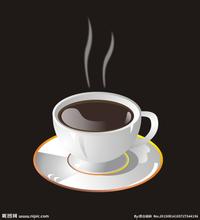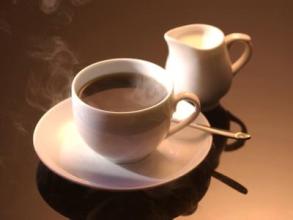Introduction of coffee roasting knowledge introduction of coffee bean roasting methods introduction of roaster price
As early as the 13th century, the Arabs invented to put coffee beans in a pot, stir-fry them with fire, grind them into powder, and then brew coffee. The early Arabs liked to bake the beans shallowly and boil them with spices such as cardamom.
Later, this method of stir-frying coffee spread to Syria, Turkey and Egypt, where it is customary to stir-fry coffee black, then grind it into powder, add sugar and boil it in water, then pour it into a small cup without precipitation and drink it with coffee grounds.
After coffee was introduced into Europe in the 18th century, Europeans also used the Turkish style to stir-fry coffee until black.
Later, because of geographical and cultural differences, Europe was divided into shallow baking schools dominated by Nordic, German, British and Scandinavian countries and deep baking schools dominated by southern Europe. The former usually bake the beans to city--full-city, while the latter generally bake them to the same depth as italy,french. Accordingly, the North American continent, which was later dominated by immigrants from northern Europe, also followed shallow baking, while Latin America, which was dominated by immigrants from southern Europe, was popular in baking. Until the mid-19th century, most of Europe used iron pots or ovens to bake beans at home, and later invented small roasters that use closed iron buckets instead of iron pans and put them on a fire to manually control, and can bake a few pounds of beans at the same time. Used by some coffee shops.
With the advent of large baking machines in the mid-19th century, large quantities of baked beans became possible. After continuous innovation after the advent of large roasters, electronically controlled precision machines have appeared in the first half of the 20th century, and machines that can continuously bake 5000kg every hour have been developed.
The emergence of large roasters has changed people's own baking habits. Buying packaged baked beans or coffee powder to cook directly at home facilitates the fast-paced life of modern people. By the 1960s, branded beans dominated the market. But there are also problems in mass roasting: ordinary raw beans, in order to maintain excessive shallow baking, lack of freshness caused by the lack of flavor, since the 1980s, a "boutique coffee movement" was launched in the United States. It advocates people to buy boutique raw beans, home baking, drink fresh coffee, pursue quality and taste, and home roasting begins to receive attention. At the same time, the pursuit of coffee quality also forces some big roasters to adopt higher quality beans to ensure the baking quality.
Development and evolution of roaster
In the early days, people generally used iron pot to stir-fry coffee beans. after coffee was introduced into Europe, Europeans used Turkish iron pot to stir-fry beans, and later invented hand-operated rotary baking, which could bake several pounds of beans at the same time, which was used by some coffee shops.
In the 1860s, large roasters began to come out, and the use of blower to cool baked beans in 1867 gave birth to the development and innovation of large roasters.
At the end of the 19th century, the advent of hot air roaster greatly improved the speed and efficiency of coffee roasting, making it possible to produce more in large quantities. In the 20th century, with the combination of roaster and electronic, it was improved to be more precise, and the fully automatic roaster appeared and had more advanced functions.
Common types and main brands of roasters at present
(1) Common types of roasters
1. Hot air type
The hot air type bean dryer uses the blower to absorb the air, and then let the air pass through a heating coil to raise its temperature. Hot air is used as a heating source to bake coffee beans. Hot air can not only provide the temperature needed for baking, but also use the power of airflow to stir coffee beans, killing two birds with one stone. Advantages: high thermal efficiency, fast heating, relatively uniform heating of raw beans, easy to control.
Disadvantages: because of the high heating efficiency, it is easy to lead to excessive heating, resulting in beans "entrainment", and too high temperature is easy to make the caramelization reaction is not sufficient.
one
Taste characteristics: the acidity is obvious, the taste is relatively clean and simple, but the taste is not rich enough and lacks depth, and deep baking is easy to produce irritating taste.
2, direct fire type
As the name implies, the direct fire is to heat the coffee beans directly with a flame. Up to now, the "fire" of direct fire not only includes general flame (including gas furnace fire and charcoal fire), but also includes infrared and electric heating pipe.
Advantages: the baking time is long, so the caramelization reaction is sufficient and the flavor is rich.
Disadvantages: it is easy to cause uneven baking, and if the heat is not well controlled, it is also easy to scorch coffee beans and form a scorched bitter taste.
3. Semi-direct fire semi-hot air type
The baking method, which combines the advantages of direct fire and hot air, is the mainstream of commercial baking machines at present. Semi-direct-fire baking is actually similar to direct-fire baking, but because there are no holes in the outer wall of the baking container, the flame will not directly touch the coffee beans. In addition, a ventilation device is added to introduce the hot air from the outside of the baking container into the baking room to improve baking efficiency. Another function of this ventilation device is to suck out the exfoliated silver skin (the film attached to the outer layer of coffee seeds). Prevent the silver skin from burning because of high temperature in the baking room, thus affecting the taste of coffee beans.
Semi-direct fire semi-hot air machine has the advantages and disadvantages of both direct fire type and hot air type, but its heating mode is changed according to the adjustment of hot air and boiler speed. The larger the hot air is, the faster the speed is, the closer it is to the hot air type; on the contrary, the closer it is to the direct fire type.

Important Notice :
前街咖啡 FrontStreet Coffee has moved to new addredd:
FrontStreet Coffee Address: 315,Donghua East Road,GuangZhou
Tel:020 38364473
- Prev

The method of growing Coffee what kind of environment is most suitable for planting coffee trees
Coffee fruit contains two seeds, namely coffee beans. The two beans are connected face to face with each other on one side of the plane. Each coffee bean has a thin outer film, which is called silver skin, and its outer layer is covered with a yellow outer skin, called endocarp. The whole coffee bean is wrapped in a sticky pulp to form coffee pulp, which is soft and sweet.
- Next

The practice of espresso what is the origin of espresso?
1. Dark chocolate, which is a perfect match for kung fu coffee, is a classic match in many cafes. two。 Listening to Chopin Mazuka and drinking this kind of espresso is not suitable for listening to more lively pop music. A quiet piano is very harmonious. Cappuccino means cappuccino Cappuccino
Related
- Beginners will see the "Coffee pull flower" guide!
- What is the difference between ice blog purified milk and ordinary milk coffee?
- Why is the Philippines the largest producer of crops in Liberia?
- For coffee extraction, should the fine powder be retained?
- How does extracted espresso fill pressed powder? How much strength does it take to press the powder?
- How to make jasmine cold extract coffee? Is the jasmine + latte good?
- Will this little toy really make the coffee taste better? How does Lily Drip affect coffee extraction?
- Will the action of slapping the filter cup also affect coffee extraction?
- What's the difference between powder-to-water ratio and powder-to-liquid ratio?
- What is the Ethiopian local species? What does it have to do with Heirloom native species?

